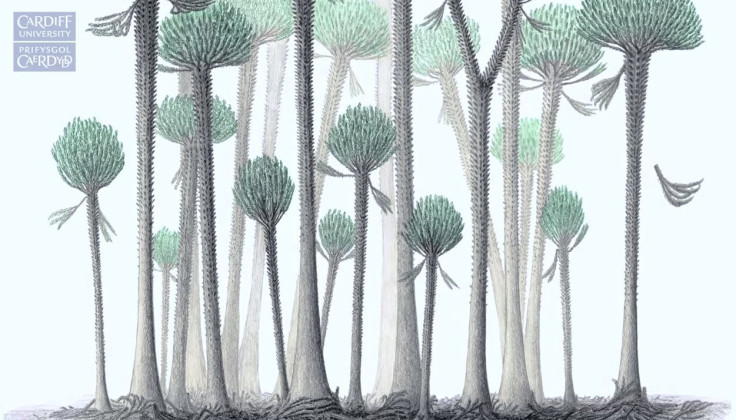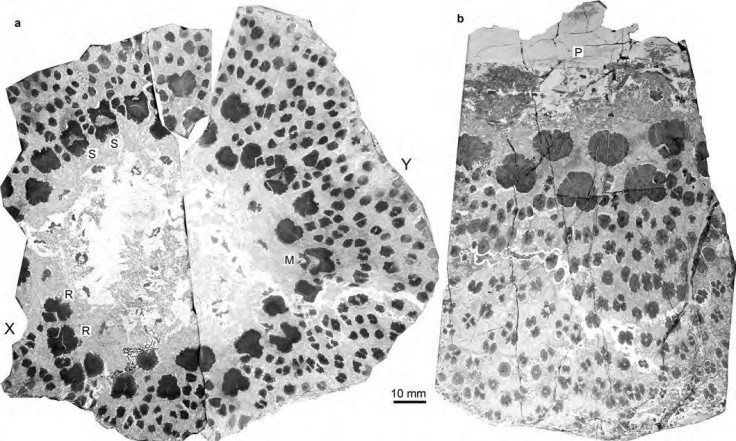Fossils Trace How World’s Oldest Trees Ripped Themselves Apart To Grow Larger

The trees that lived hundreds of millions of years ago were really just a bunch of miniature trees tied together, according to new fossils.
Remains from one of these plants that lived 374 million years ago in northwestern China show a growth system that is vastly different from what we are used to seeing today. Instead of accumulating rings with each new year of growth, the trees of this prehistoric time had hollow centers with groups of vertical, connected strands forming a network around them and carrying water to different areas, according to a study in the journal Proceedings of the National Academy of Sciences. They also collapsed upon themselves in a strategic way that allowed them to grow bigger.
The fossils scientists used to paint this picture come from Cladoxylopsida, the oldest group of fossilized trees we have seen. They date back to the Devonian Period, known for being the era in which the first land-dwelling vertebrates called tetrapods, a group of four-limbed amphibians, evolved on Earth.
“The evolution of trees and forests … 393–359 million years ago profoundly transformed the terrestrial environment and atmosphere,” the study says. “We have discovered a complex tree growth strategy unique in Earth history, but with some similarity to that of living palms.”


When the prehistoric trees reached a certain size, the bottom of the trunk would rip itself apart, unfurling outward to make itself wider and allowing room for more growth, what the study called a “controlled structural collapse at the expanding base.” That gave its bottom a bulbous look.
“The real mystery that’s bothered me for the past 30 years is how did these trees grow because they’re not like ordinary trees,” researcher Chris Berry said in a video from Cardiff University. “And as far as we know there’s no other tree in the whole history of life that did anything as crazy as that.”
The university explained that the findings demonstrate that the world’s first trees were also the most complex to have grown here.
The trees were mostly empty inside; apart from those organized water-delivering strands called xylem in the outer couple of inches of the wood, the plants were hollow. Each of the strands grew its own rings, giving it the appearance of “a large collection of mini trees,” Cardiff University explained in a statement. “As the strands got bigger, and the volume of soft tissues between the strands increased, the diameter of the tree trunk expanded. … The connections between each of the strands would split apart in a curiously controlled and self-repairing way to accommodate the growth.”
This controlled collapse is how the trees were able to grow as large as they did.
Berry is focused on understanding how the world’s first trees interacted with the climate — how much carbon they pulled out of atmosphere and what effect that had on the rest of the environment.
“By studying these extremely rare fossils, we’ve gained an unprecedented insight into the anatomy of our earliest trees and the complex growth mechanisms that they employed,” Berry said in the Cardiff statement. “This raises a provoking question: why are the very oldest trees the most complicated?”
These fossils he most recently studied from China were well-preserved in volcanic sediment, keeping the cells in the tree as they were all those hundreds of millions of years ago.
© Copyright IBTimes 2024. All rights reserved.





















